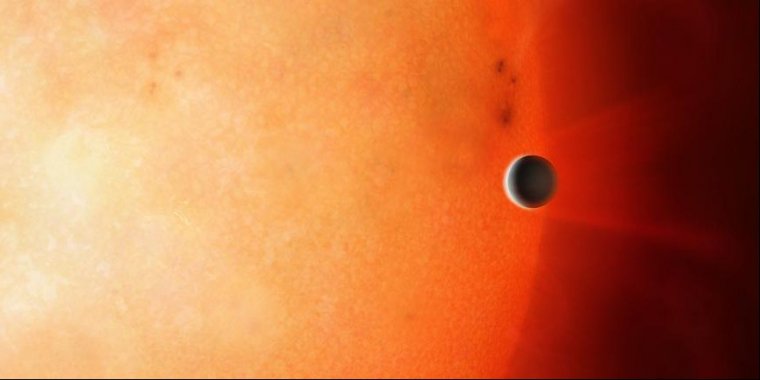| News / Space News |
‘Forbidden’ planet found wandering ‘Neptunian Desert’
An international group of astronomers has identified a rogue planet orbiting its star in the so-called Neptunian Desert.

Artist's impression of NGTS-4b. Photo: University of Warwick/Mark Garlick
The Neptunian Desert is a region close to stars where large planets with their own atmospheres, similar to Neptune, are not expected to survive, since the strong irradiation from the star would cause any gaseous atmosphere to evaporate, leaving just a rocky core behind.
However, NGTS-4b, nicknamed the ‘Forbidden Planet’, still has its atmosphere intact and is the first exoplanet of its kind to be found in the Neptunian Desert.
NGTS-4b is smaller than Neptune and three times the size of Earth. It is dense and hot, with a mass 20 times that of Earth and an average surface temperature of 1000 degrees Celsius. The planet orbits its star very closely, completing a full orbit in just 1.3 days.
The planet was identified using the Next-Generation Transit Survey (NGTS) observing facility at the European Southern Observatory's Paranal Observatory in Chile’s Atacama Desert.
When looking for new planets, astronomers use facilities such as NGTS to look for a dip in the light of a star, which occurs when an orbiting planet passes in front of it, blocking some of the light. Usually, dips of 1% and more can be picked up by ground-based searches, but the NGTS telescopes can pick up a dip of just 0.2%.
This sensitivity means that astronomers can now detect a wider range of exoplanets: those with diameters between two and eight times that of Earth, in between the smaller rocky planets and gas giants.
The researchers believe the planet may have moved into the Neptunian Desert recently, in the last one million years, or it was very big and the atmosphere is still evaporating. (University of Cambridge)
YOU MAY ALSO LIKE



